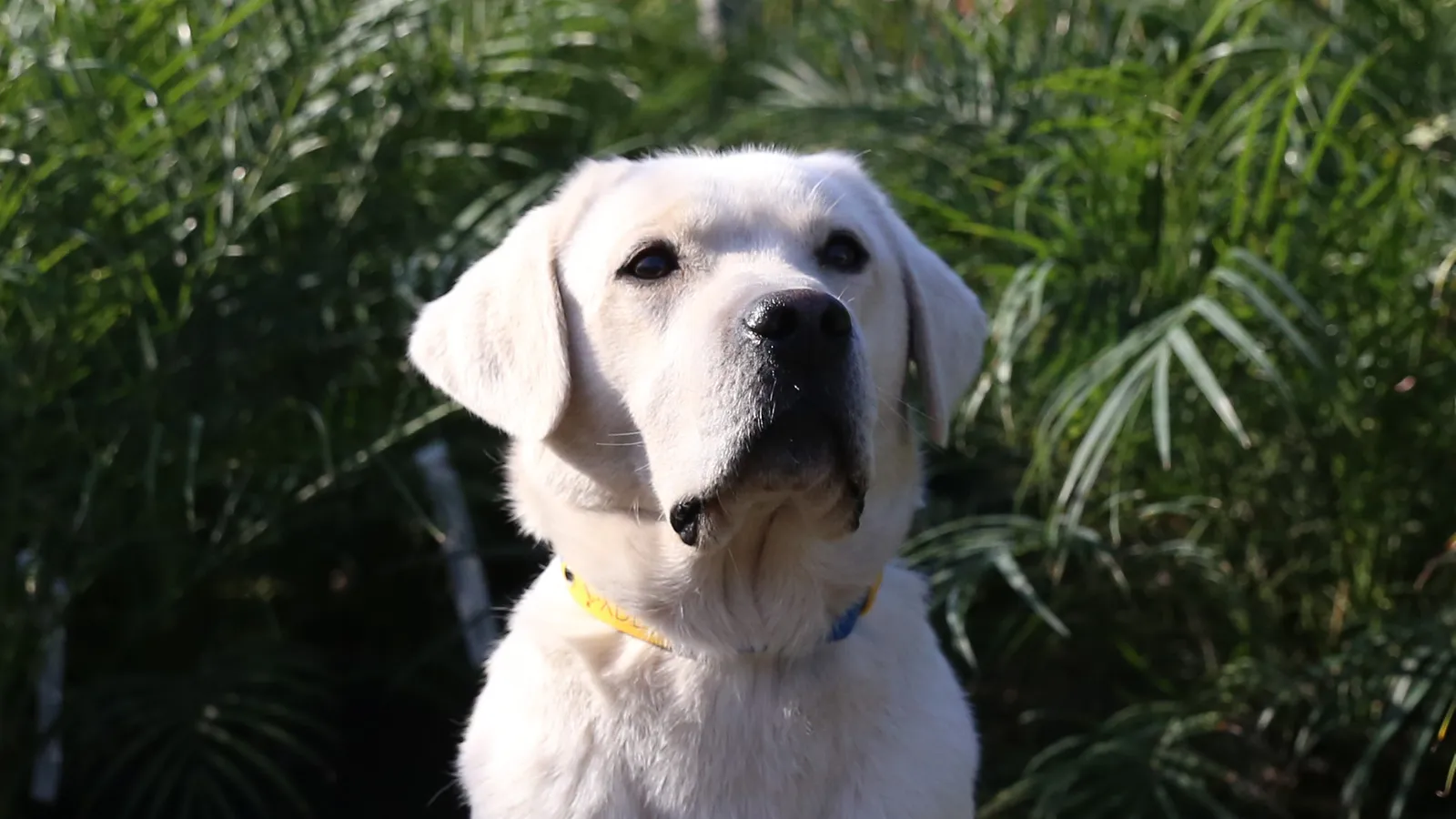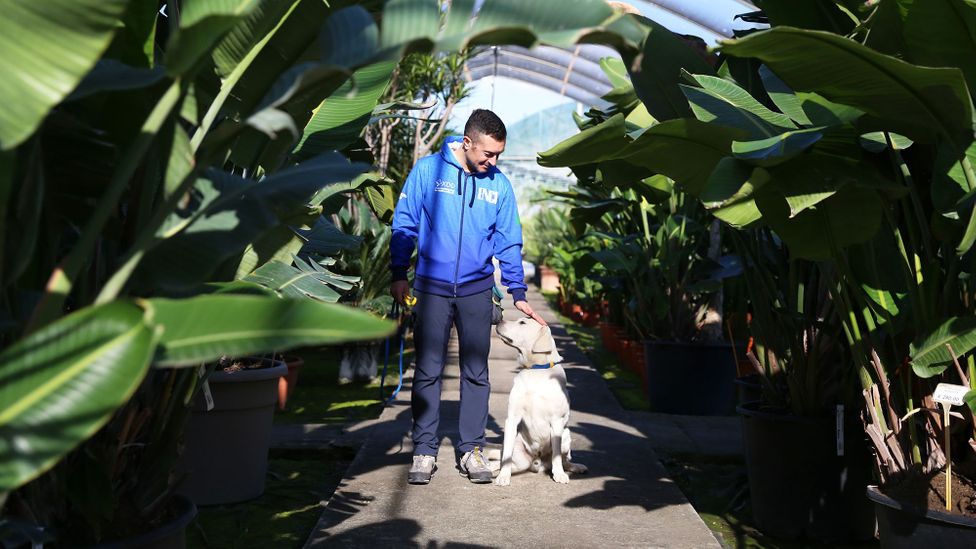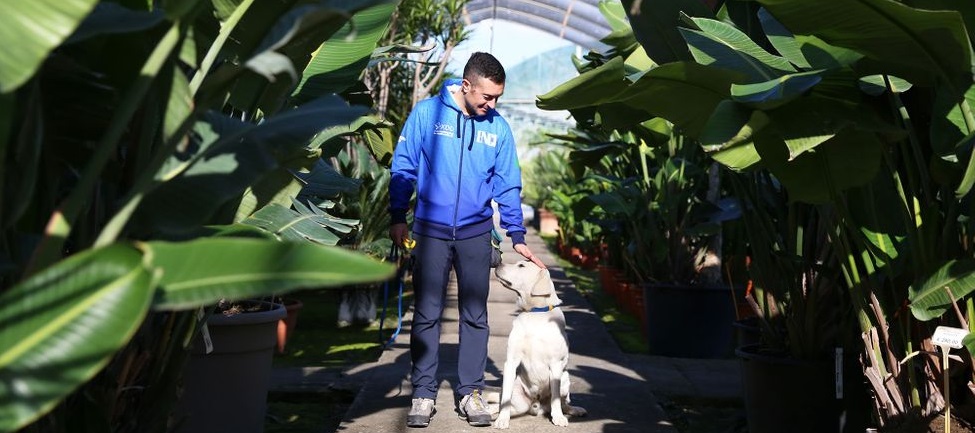A deadly and hard-to-detect disease has been ravaging the treasured olive trees of southern Italy for 10 years. A highly trained squad of super-sniffer dogs could save them.

by Agostino Petroni for BBC – On a sunny winter morning, the dog trainer Mario Fortebraccio slowly bends toward a line of potted olive trees and indicates it with his hand. Waiting for that signal, Paco, a three-year-old white Labrador, rushes through the row of plants with his head tilted, sniffing each pot at the root, the rhythm of his inhaling echoing through the greenhouse. The dog is carefully scouting for something humans can’t sense.
“They don’t do anything if there is no reward,” Fortebraccio tells me with a smile. After a few seconds, having completed his task, Paco returned to the trainer, lifted his leg to urinate on a nearby plant, wagged his tail, and claimed a little crunchy treat.
At Vivai Giuranna, an extensive commercial greenhouse with over one million plants in Parabita, in the southern Italian region of Puglia, Paco is searching for Xylella fastidiosa, a type of bacterium that has been ravaging southern Italy’s olive fields for the past decade. Paco and a few other four-legged colleagues make up the highly trained Xylella Detection Dogs team.
“These dogs have got something unique,” says Angelo Delle Donne, the head plant health inspector for the government of the province of Lecce, who has been battling Xylella since it was discovered in Puglia in 2013.

Xylella fastiodiosa is a bacterium that clogs the xylem (the vessels that carry water from the roots to the leaves) of trees and other woody plants and slowly chokes them to death. Spittlebugs, a common insect, spread the disease: when they bite an infected leaf, the bacteria move into their saliva, and the bugs transmit the disease when they feed on their next healthy plant.
There are no known cures for this disease, and once infected, the plant slowly dries up (though some infected plants manage to survive without showing symptoms). There are several strains of Xylella, and together they affect 595 plant species worldwide at the last count. Over the past century, Xylella has decimated orange fields in Brazil, vineyards in southern California, and pear trees in Taiwan. Then, 10 years ago, Xylella reached Puglia’s olive trees.
With its 60 million olive trees, Puglia used to produce up to 50% of Italy’s olive oil, but in just a few years, Xylella infected and killed 21 million trees, many of which were several centuries old.
Today, an endless sea of dead, grey tree trunks covers the lower part of the region, dotted with what’s left of thousands of small-scale farms, olive mills, and greenhouses.


